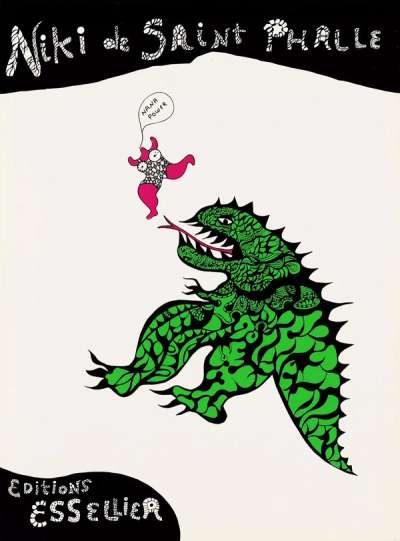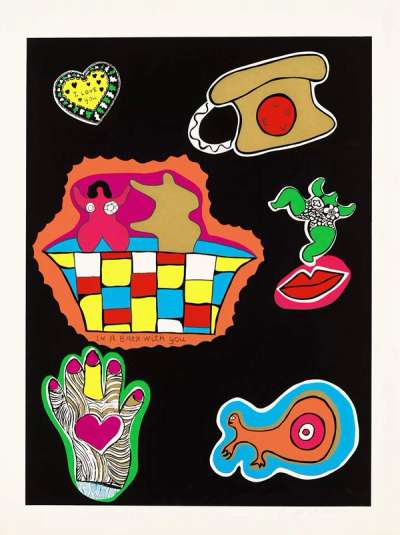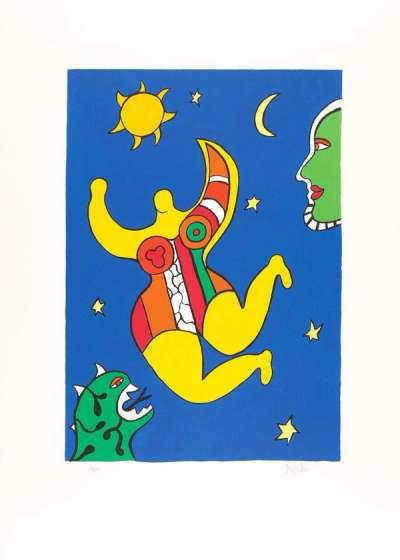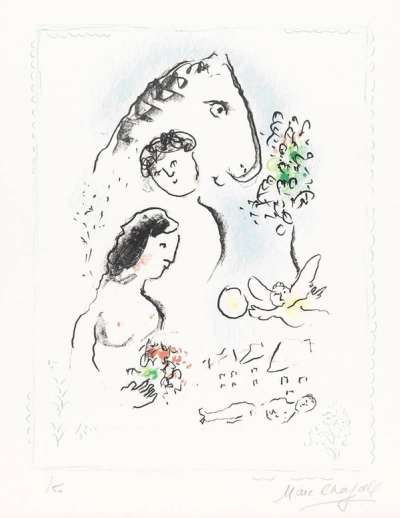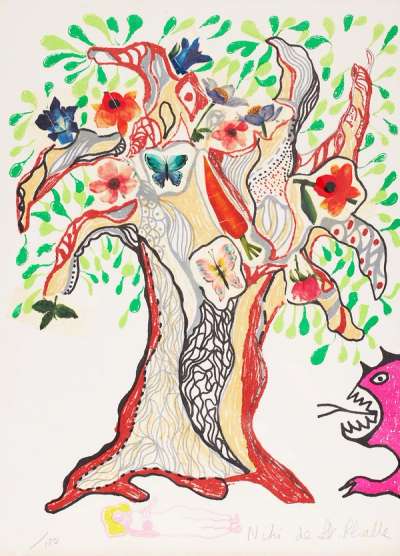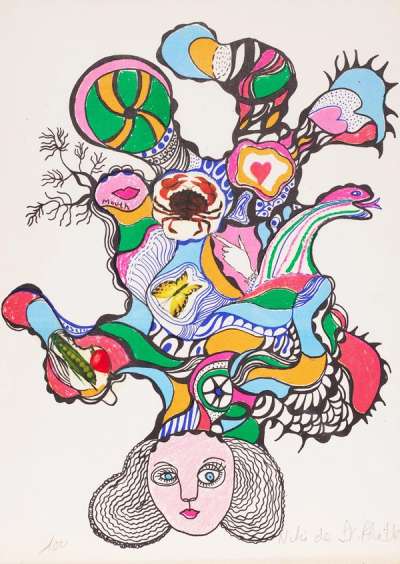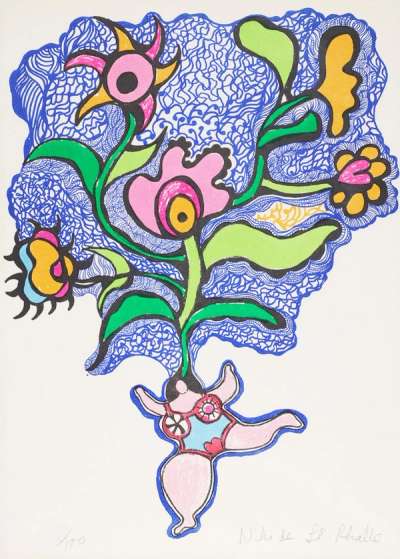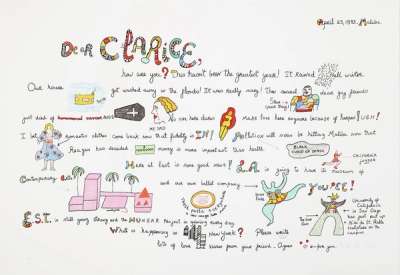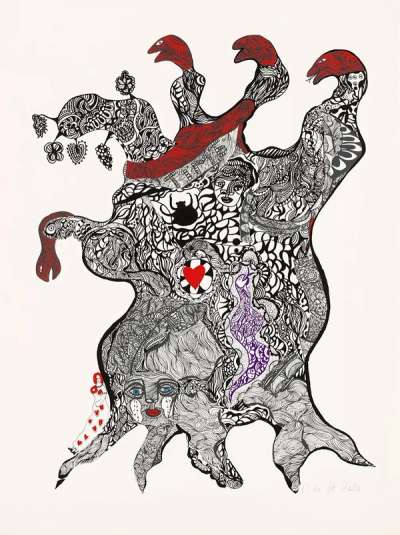A Seller’s Guide to Niki De Saint Phalle

 Nana Power XIV © Niki de Saint Phalle 1970
Nana Power XIV © Niki de Saint Phalle 1970
Interested in buying or selling
Niki de Saint Phalle?
Niki de Saint Phalle
45 works
Key Takeaways
Niki de Saint Phalle's prints, including the Nana and Tarot Garden series, range from £5,000 to £10,000, with record sales reaching £16,420. Authenticating involves examining provenance, signature, edition number, and consulting her catalogue raisonné. Notably, the Niki Charitable Art Foundation is a valuable resource for verification. Proper storage away from sunlight and humidity is crucial to maintain condition and value. Recent exhibitions, like the Grand Palais in Paris and MoMA PS1 in New York, have boosted interest in her work. For optimal timing, monitor art market reports and major anniversaries.
From her explosive shooting paintings of the 1960s to the voluptuous Nanas that became her signature, Niki de Saint Phalle's work pulses with feminist power and childlike wonder. Her monumental sculptures, like the towering Golem in Jerusalem or the psychedelic Tarot Garden in Tuscany, transform public spaces into fantastical realms. If you’re considering selling a Saint Phalle print, this guide will walk you through your options.
Saint Phalle's art is a riot of colour and form, channelling personal trauma into exuberant creativity. She tackled taboos head-on, exploring sexuality, violence, and social norms through a distinctly female lens. By turns playful and provocative, her diverse portfolio spans painting, sculpture, film, and architecture. Saint Phalle's legacy lies not just in her iconic works, but in her fearless challenge to the art world's male-dominated status quo.
How Much Do Niki de Saint Phalle Prints Sell For?
Saint Phalle's printmaking complemented her sculptural and painting practice. She began using techniques such as lithography, etching, and screenprinting in the 1960s, creating prints that featured the same mythical, emotive, and bold forms as her sculptures. Saint Phalle collaborated with renowned print workshops, including Atelier Mourlot in Paris. Her limited editions were highly sought after, allowing a broader audience to own her art.
The Nana series prints are among her most valuable, with a Nana Power album (1970) of 17 serigraphs selling via Sotheby’s for £16,420 in 2019. These colourful, exuberant depictions of voluptuous female figures have become iconic representations of Saint Phalle's style and feminist message. Other popular themes in her printmaking, such as the Tarot Garden series, the Californian Diary series, or her Monster prints, also command significant prices, typically ranging from £5,000 to £10,000 for well-preserved examples. In 2023, Californian Diary (1993) sold at auction for £10,545.
The value of Saint Phalle prints can vary widely, influenced by a complex interplay of factors including rarity, condition, provenance, subject matter, and current market trends. Factors such as edition size play a crucial role; prints from smaller, more exclusive runs tend to command higher prices. The print's size can also impact value, with larger works generally fetching more.
It's worth noting that Saint Phalle's market has shown steady growth over the past decade. The highest value achieved at auction by an individual Saint Phalle print is Untitled (circa 1969), a serigraph that sold for £13,828 at Sotheby’s Paris in 2019.
How Do You Authenticate a Niki de Saint Phalle Print?
To authenticate a Niki de Saint Phalle print, carefully check for several key elements: provenance, signature, edition number, and validation via a catalogue raisonné. Provenance, or the print's ownership history, is crucial in establishing authenticity. Cross-reference the work with Saint Phalle's catalogue raisonné, a comprehensive list of her known prints - reputable dealers will have access to this kind of resource; alternatively, seek out Niki de Saint Phalle: Monograph by Hatje Cantz or Niki de Saint Phalle by Pontus Hulten. Experts will also be able to examine the paper quality and printing technique, to ensure it corresponds with the specific materials Saint Phalle used for different series.
For a definitive assessment, consult the Niki Charitable Art Foundation, dedicated to preserving Saint Phalle's legacy, or a reputable art appraiser specialising in 20th-century prints. Be cautious of prints with missing documentation or suspiciously low prices. High-quality digital reproductions have made forgeries harder to detect, often requiring professional evaluation. Remember that authentication is complex, and even experts may disagree on a print's legitimacy.
Edition and Signature
Saint Phalle’s work often featured handwritten text, such as in Dear Clarice (1983), and Dear Laura (1982), where the majority of the piece consists of personal politically-charged text. In these instances, Saint Phalle’s name and references to herself and her work often appear within the text, serving as an additional signature. However, you should also look for the artist's signature in pencil below the image, keeping in mind that Saint Phalle's signature changed over time. In most cases, you can expect to find a simple “Niki.” Alongside the signature, you should find an edition number, usually expressed as a fraction (e.g. 75/200). Authentic prints often have a stamp from the print studio or publisher, which not only makes the print easier to trace and validate, but also gives you a starting point for tracking down knowledgeable experts who can assist with authentication.
Browse Saint Phalle prints on the Trading Floor and find out more about the print market growth on the MAB100 Print Index.
Looking to Sell Your Niki De Saint Phalle Prints?
Request a free and zero obligation valuation with our team without hesitation. Track your prints & editions with MyPortfolio.
Has Your Niki de Saint Phalle Print Been Kept in Good Condition?
Prints, being delicate works on paper, are particularly susceptible to environmental factors and improper handling. Saint Phalle’s prints are known for their characteristically bold colours and fine detail, which means that any damage or fading can be detrimental to its resale value.
When assessing the condition of your Niki de Saint Phalle print, there are several key factors to consider. Firstly, examine the paper for any signs of discolouration, yellowing, or foxing - the brown spots that can develop over time, caused by dampness, mould, and insects. Check for any creases, tears, or punctures in the paper, as these can signify poor handling and insecure storage. Prolonged exposure to sunlight or harsh artificial light may have resulted in faded colours and yellowed paper. Look closely at the edges of the print for any signs of wear or fraying. If the print has been framed, ensure it hasn't been adhered directly to the backing board, as this can cause irreversible damage.
If you notice that your print has sustained damage, it is possible to consult a conservator - the sooner you act, the more effective the restoration. Although restoration may not entirely restore the original value of the print, it will help you preserve the piece and achieve the best possible sale. MyArtBroker can help you begin the restoration process.
When is the Best Time to Sell My Niki de Saint Phalle Print?
The best time to sell your Niki de Saint Phalle print can be influenced by various factors, including recent exhibitions, anniversaries, and market trends. Historically, significant exhibitions or retrospectives of Saint Phalle’s work can drive up interest and prices for her art. For instance, the large-scale retrospectives at institutions such as the Grand Palais in Paris in 2014 and the MoMA PS1 in New York in 2021 raised her profile and the market value of her works. Additionally, the market tends to respond positively during anniversaries of her birth or death, or when her art is featured prominently in major art fairs like Art Basel.
To determine the best time to sell, keep an eye on the art market and upcoming exhibitions or retrospectives dedicated to Saint Phalle. Art market reports, auction results, and insights from major auction houses such as Sotheby’s and Christie’s can provide valuable information on current demand and price trends. When prints consistently sell above estimate, then you can feel confident that demand is high. Consulting with art appraisers or galleries that specialise in 20th-century and contemporary art can also offer strategic advice on timing your sale to maximise returns.
MyArtBroker offers advanced art tech tools to help you determine the optimal time to sell. Our MyPortfolio service features an AI-powered value indicator that provides real-time valuations of individual prints based on both public and private sales data. Combined with our complimentary valuations, we can help ensure your print achieves maximum value by selling at the perfect moment.
Ways to Sell with MyArtBroker
At MyArtBroker, our specialists provide a free market valuation for your artwork, offering a level of transparency unmatched in today’s market. In addition to our valuations, through our online Trading Floor, you can access real-time insights into works by the artist you’re looking to sell, including pieces that are most in demand, wanted, or currently for sale: allowing sellers to trust the valuation that they are provided.
Additionally, the MyPortfolio collection management service grants you free access to our comprehensive print market database. This resource allows you to review auction histories for the specific work you’re looking to sell, including hammer prices, values paid, and seller returns. In a fluctuating market, this historical data is invaluable - and often comes at a cost elsewhere - offering insights into past and current values to further inform decisions based on market timing and conditions. In addition to our specialists guidance, you have concrete data.
Our approach is tailored to align with the unique attributes of each artwork, and offer optimal results:
How a Private Sale Works
Unlike peer-to-peer platforms, which lack specialised expertise, authenticity guarantees, and legal infrastructure for high-value sales, MyArtBroker operates through private sales ensuring a secure and seamless transaction process. We charge sellers 0% to sell, and take a small commission from our buyers, absorbing essential aspects including insurance, shipping, and marketing - at no extra cost to the seller. There is no magic to it, we’re a lean specialised business with less overheads than traditional models meaning we can do better for our clients.
Our revenue is derived from buyer commissions only, which are individually negotiated upon offer, and we aim to give the client the best return in the market place. By focusing on high-value artworks in excess of £10,000, we provide specialised care and expertise, ensuring each piece receives the attention it deserves, while simultaneously maximising returns with our clients. For works that fall below this threshold speak to the team about a recommendation, we offer market advisory free of charge. Our goal at MyArtBroker is to offer a seamless solution, setting us apart in the art market.
Advisory and Recommendations
In cases for artists and artworks, where our existing network of collectors isn’t the best fit due to value, medium or condition we collaborate with reputable partners to facilitate its sale. Carefully tailoring your artwork to the right party. This tailored approach is especially important as it considers the unique attributes of each artwork, providing sellers with the best possible outcome in today’s shifting art market. You can discuss this approach with us without charge as part of our advisory service.
Such recommendations are on a case-by-case basis, and ensures broader exposure and takes advantage of our knowledge of where a work will do best.
Niki de Saint Phalle Collection Management with MyPortfolio
In addition to our live trading floor, MyArtBroker's MyPortfolio serves as a collection management system, empowering collectors to curate and oversee their prints and editions collection. This feature grants users access to our print market database, uniquely tied to our proprietary algorithm, SingularityX. This algorithm scans and analyses both public auction and private sales data to determine real time valuations of individual print works, factoring in various aspects such as condition, colour, and other factors affecting value.
Read What Powers MyArtBroker's Technology? In Conversation With Stuart Jamieson, Financial Quant to learn more about our algorithm.
Emerging art tech tools are vital in navigating the current, and evolving, digital art market landscape. For instance, by adding Niki de Saint Phalle prints from our website to the MyPortfolio dashboard, users gain insight into unique sale opportunities and observe market performance and fluctuations as they happen, streamlining the sales process effortlessly. Our pioneering technology has revolutionised art portfolio management, making it more accessible and equipping users with data-driven insights for informed decisions. MyArtBroker harnesses cutting-edge technology driven by data, coupled with a team of industry experts, to deliver an exceptional experience. Our professionals work closely with clients, utilising the MyPortfolio dashboard, to provide personalised guidance for creating a profitable art collection. By merging technology and expertise, we are committed to offering unparalleled curation and customer service.















